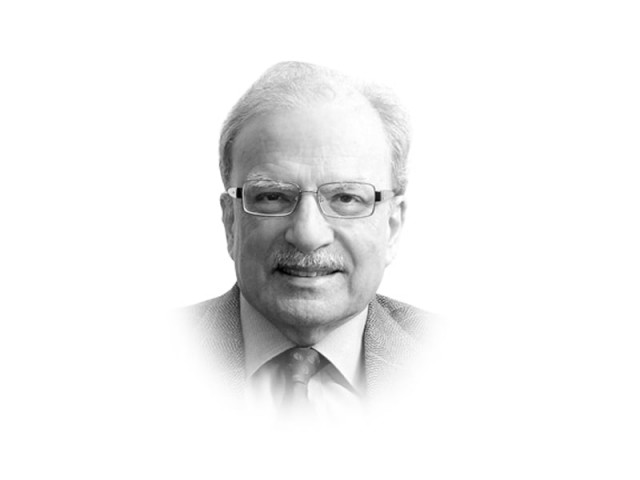
Change almost always is disruptive and the one occurring now in 2015 is no exception. In addition to the wars in the Middle East and the refugee crisis in Europe, the past several weeks have seen enormous turbulence in the world’s financial markets. This has been attributed to the secular decline in the rates of growth in the old economies of Europe and North America, and the significant structural changes that are underway in China. The latter is of enormous significance for Pakistan given its increasingly close relations with Beijing. If China stumbles, Pakistan will stumble along with it. In the article today, I will examine what was expected of China in the decade and a half to the year 2030. I will follow that discussion next week with an analysis of whether the recent events in the global financial market should be the cause for reassessing China’s economic prospects.
In 2013, about the time the reins of government in China passed into the powerful hands of President Xi Jinping, the World Bank published a report titled “China 2030”. The authors asked two questions: can China’s growth rate still be among the highest in the world even if it slows from its current rapid pace; and can it maintain the rapid growth with little disruption to the world, the environment and the fabric of its own society? Its answer to the two questions was a qualified ‘yes’. The qualification was whether China will be able to transition from the policies that served it so well in the past to ones that address the very different challenges of a very different future.
Over the past four decades, China had broken the trend of the past two centuries and had moved to where it was half a millennium ago. From the early 1500s until the early 1800s, China’s economy was the world’s largest. By 1820, it was again one-fifth as big as Europe’s and accounted for a third of the world’ combined gross domestic product. But the next two centuries were tumultuous, largely because of the intrusion of several European states as well as the United States in its affairs. The country went through catastrophic decline from 1820 to 1980. However, that trend was reversed by the careful adoption of growth inducing policies. An average rate of growth of 9.9 per cent was achieved over the last 35 years. In 2015, the size of the Chinese economy was 32 times larger than in 1980. During this period, some 500 million people had been lifted out of poverty and into the middle class. But that breakneck speed could not be maintained. Even a rate of growth of seven per cent a year in the next half decade, which President Xi has called the “new normal”, will require hard policy work. What are the policies that should be adopted? In its report, the World Bank proposes six areas of policy attention.
The first is the implementation of structural reforms to strengthen the foundations for a market-based economy. That has been done to a considerable degree but more will be needed. The second is to adopt a set of policies that will be friendly to the environment. This is required to save its own citizens from developments such as atmospheric pollution, which is so severe in some cities that it has begun to seriously affect citizens’ health. China also has to meet its obligations to the international community to control the emissions of greenhouse gases to reduce global warming. Third, China will need to accelerate the pace of innovation and create an open innovation system. The fourth area will require expanding the opportunities and promotion of social security for all citizens. Without this, the Chinese will continue to save more than they should and not spend enough on current consumption to add another driver of economic growth. The fifth area requires strengthening of the fiscal system so that the state can pay for providing better health and education to the rapidly growing middle class. Sixth, China will need to focus on developing mutually beneficial relations with the world. But for that to happen, the world will have to be less grudging in accommodating China.
With these changes in place, the World Bank estimates that the rate of growth of the Chinese economy will decline to seven per cent a year in 2016-26, and to five per cent in 2026-30.
Published in The Express Tribune, September 14th, 2015.
Like Opinion & Editorial on Facebook, follow @ETOpEd on Twitter to receive all updates on all our daily pieces.















COMMENTS
Comments are moderated and generally will be posted if they are on-topic and not abusive.
For more information, please see our Comments FAQ